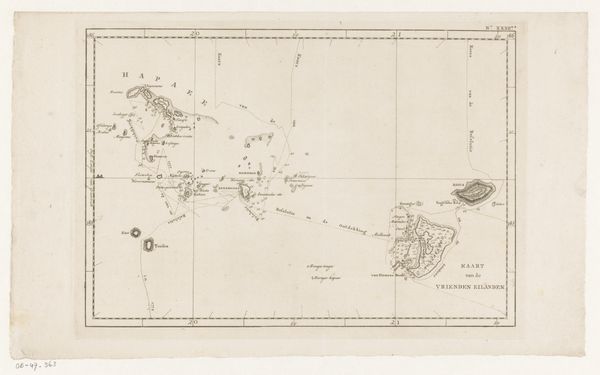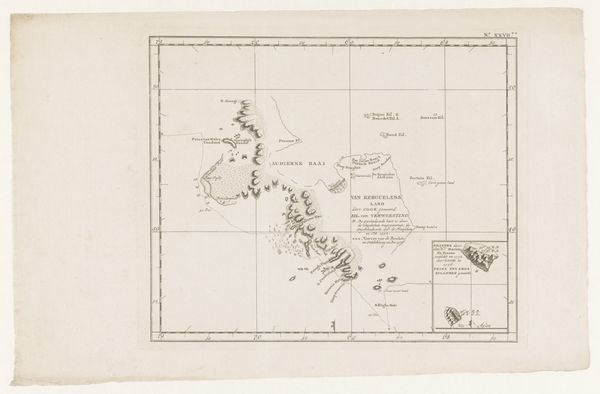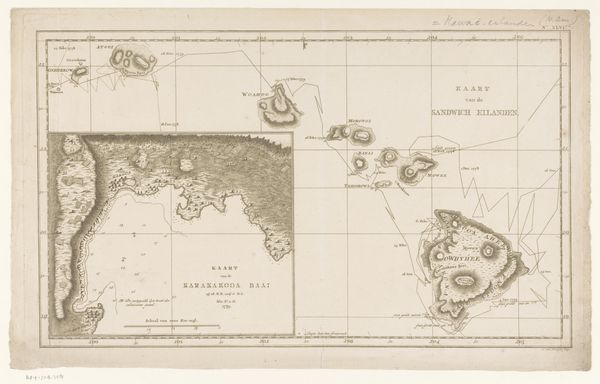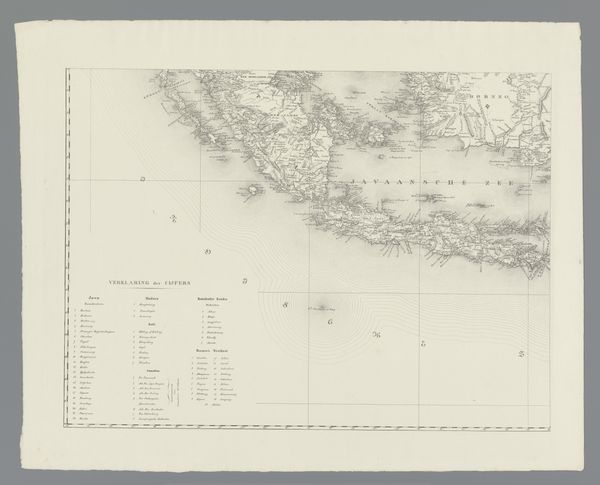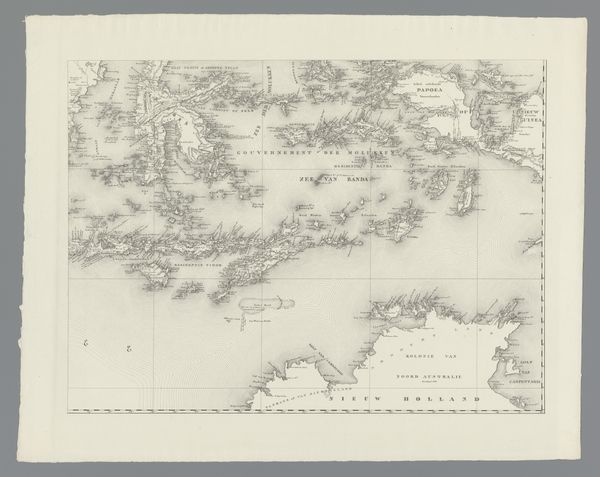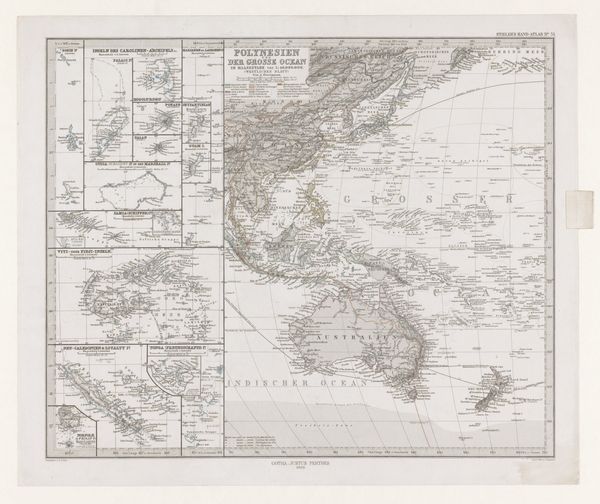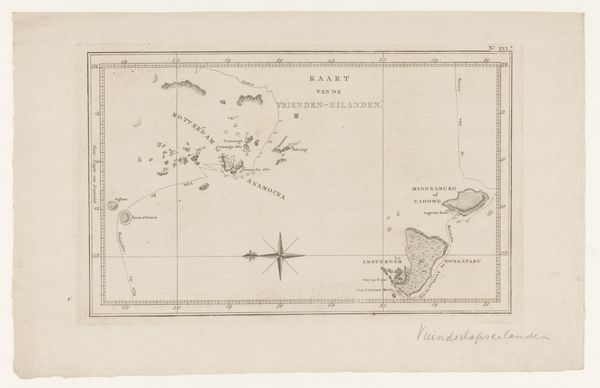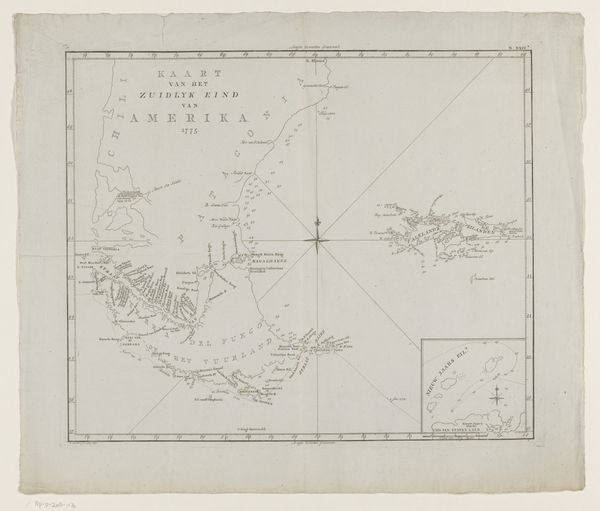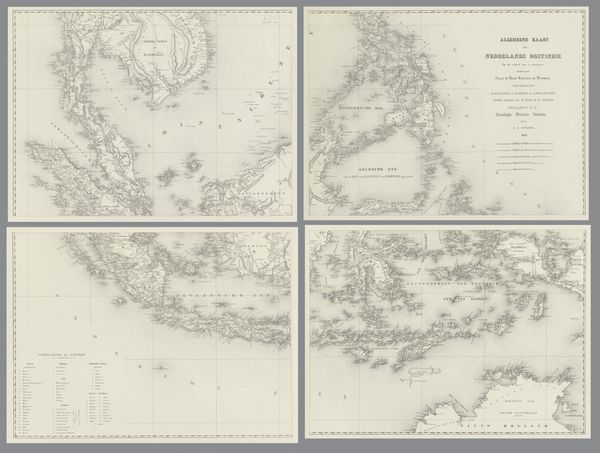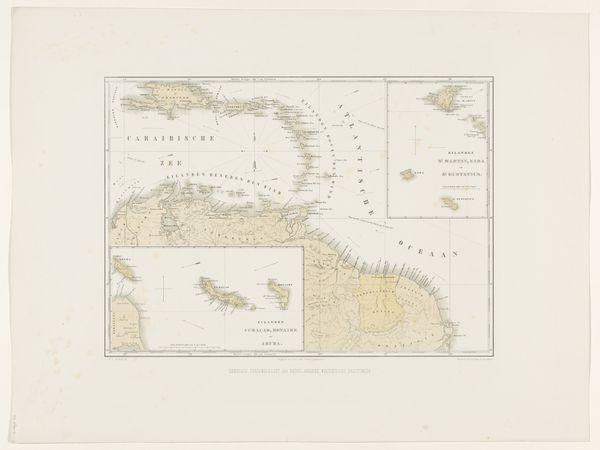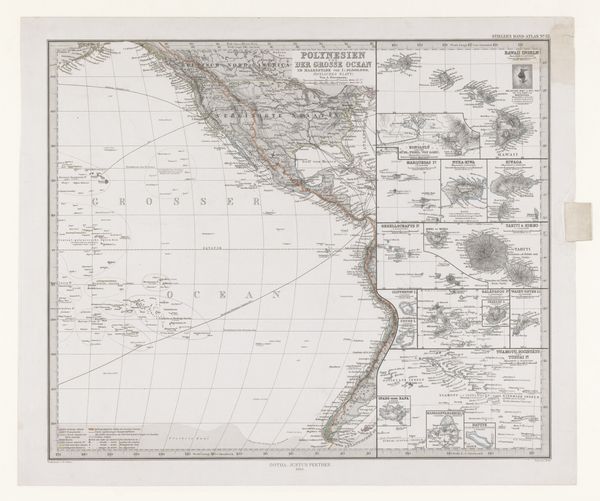
graphic-art, print, paper, engraving
#
graphic-art
#
aged paper
#
homemade paper
#
ink paper printed
#
parchment
# print
#
light coloured
#
old engraving style
#
landscape
#
paper
#
tea stained
#
geometric
#
orientalism
#
warm-toned
#
golden font
#
natural palette
#
engraving
Dimensions: height 370 mm, width 446 mm
Copyright: Rijks Museum: Open Domain
Editor: This is "Kaart van Oost-Polynesië," a map of East Polynesia created by Carl Poppey in 1864, using engraving on paper. I’m struck by how it depicts the region as this vast, almost empty space punctuated by islands. What do you see in this piece? Curator: This map, while seemingly objective, is a product of its time, deeply embedded within the context of 19th-century colonialism. Notice how it prioritizes European perspective through language and orientation. It flattens a complex, interconnected web of indigenous relationships, knowledges, and histories into a series of isolated points. It also served as a tool for European powers seeking to expand their influence in the Pacific. Consider how the very act of mapping can be a form of claiming, of asserting dominance over a territory and its people. What are your thoughts on this power dynamic at play? Editor: That's a good point! The visual authority it has. It's interesting how something presented as factual can be so laden with a specific perspective. Did the style of cartography influence this at all? Curator: Absolutely. The supposedly "objective" style of cartography, with its geometric precision and rational layout, contributes to the illusion of neutrality. But even the choice of projection, the level of detail included (or excluded), and the way place names are rendered all reflect underlying biases. How do you think the people native to those areas saw their lands? Editor: Probably something completely different than empty space. This makes me reconsider the impact these kinds of visual representations had at the time, solidifying a very skewed perception of reality. Thanks, I learned so much today! Curator: And I appreciate you bringing a fresh, critical eye to this historical document. It's important to continuously interrogate these representations and uncover the hidden power dynamics they perpetuate.
Comments
No comments
Be the first to comment and join the conversation on the ultimate creative platform.
